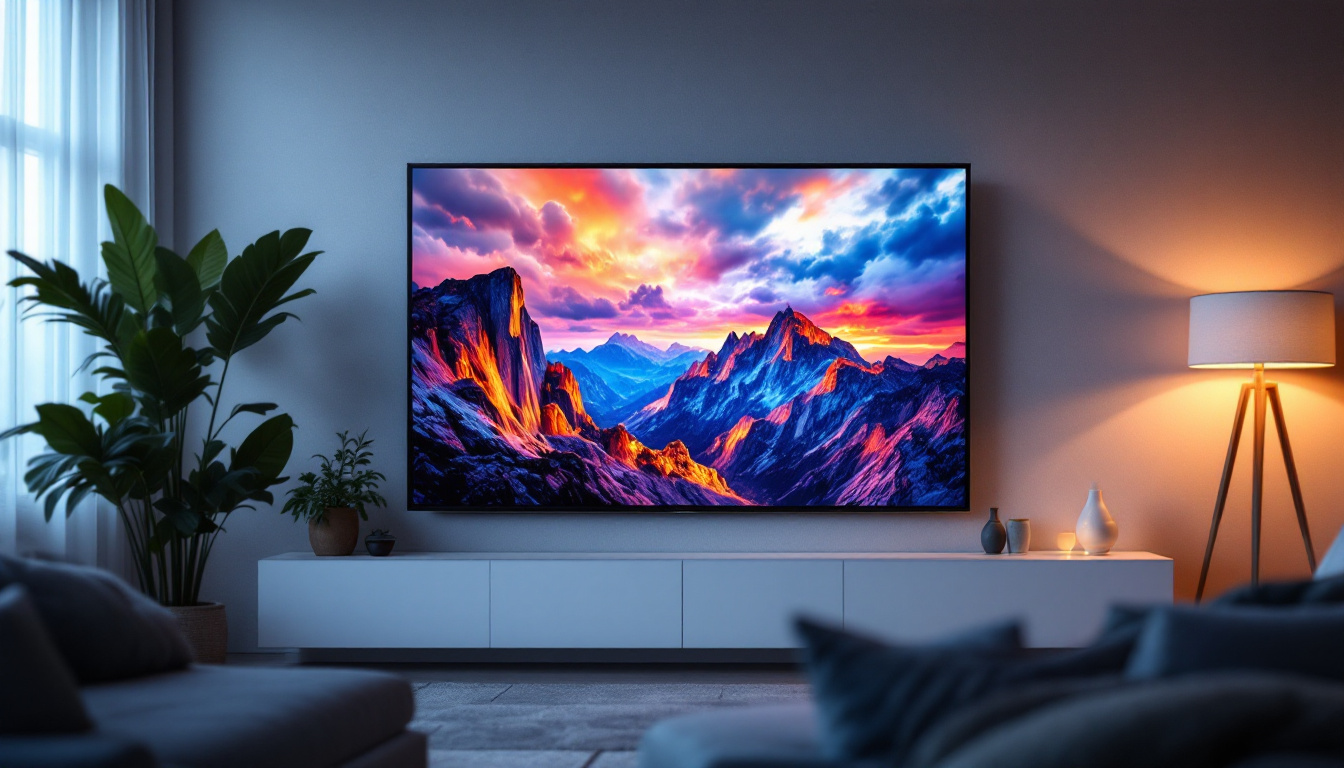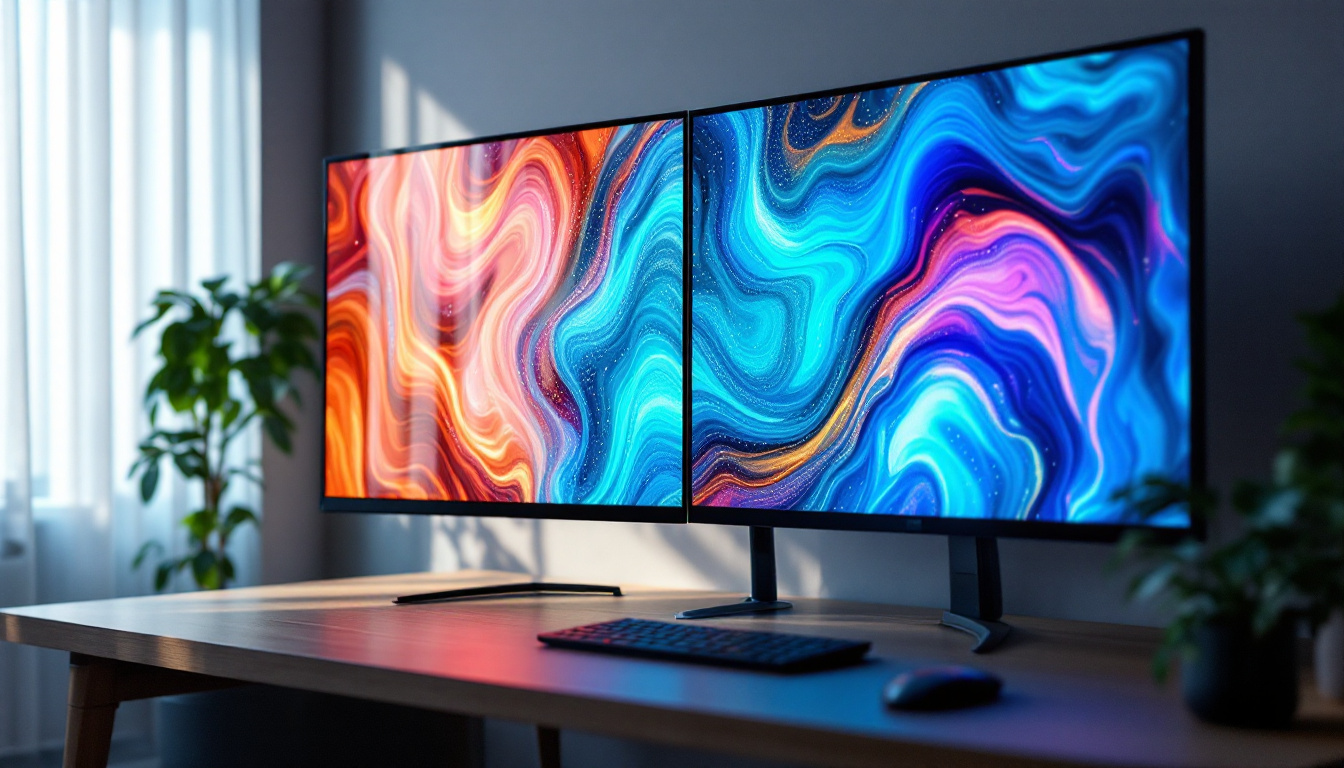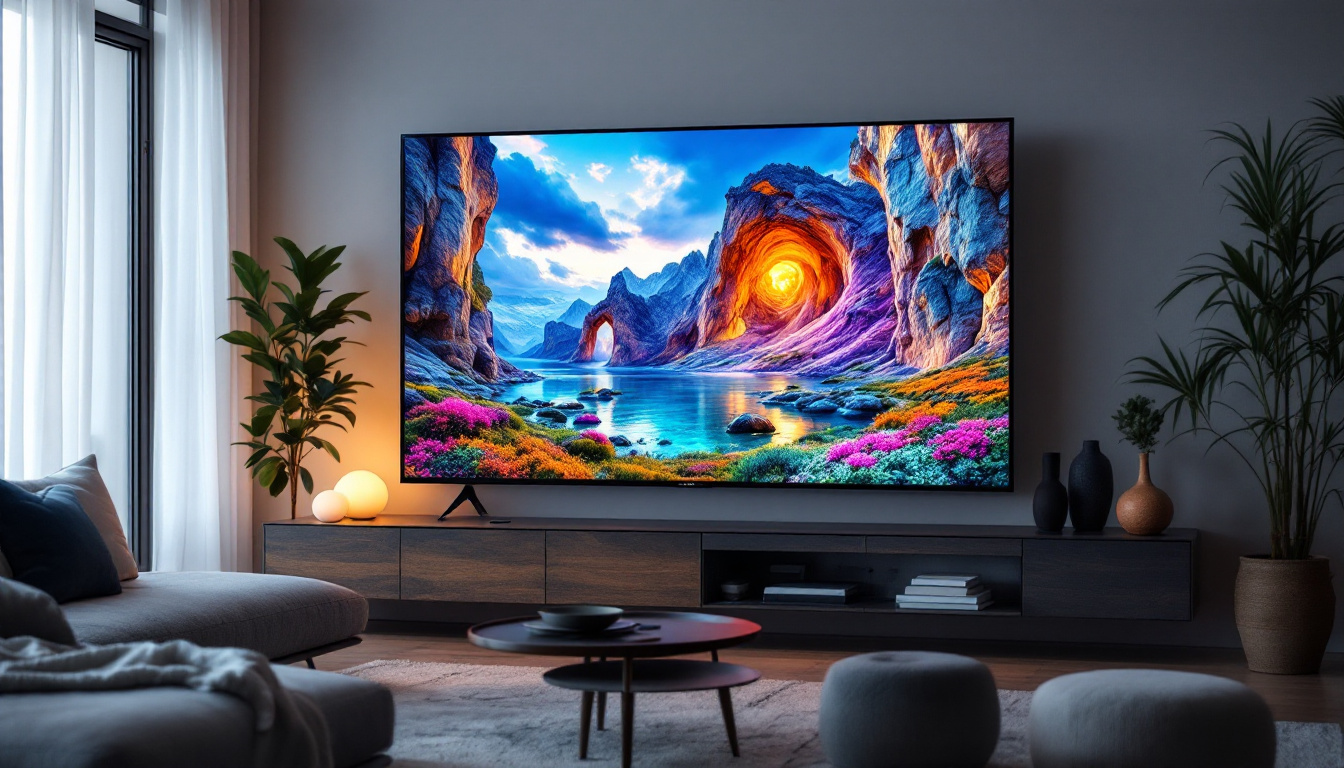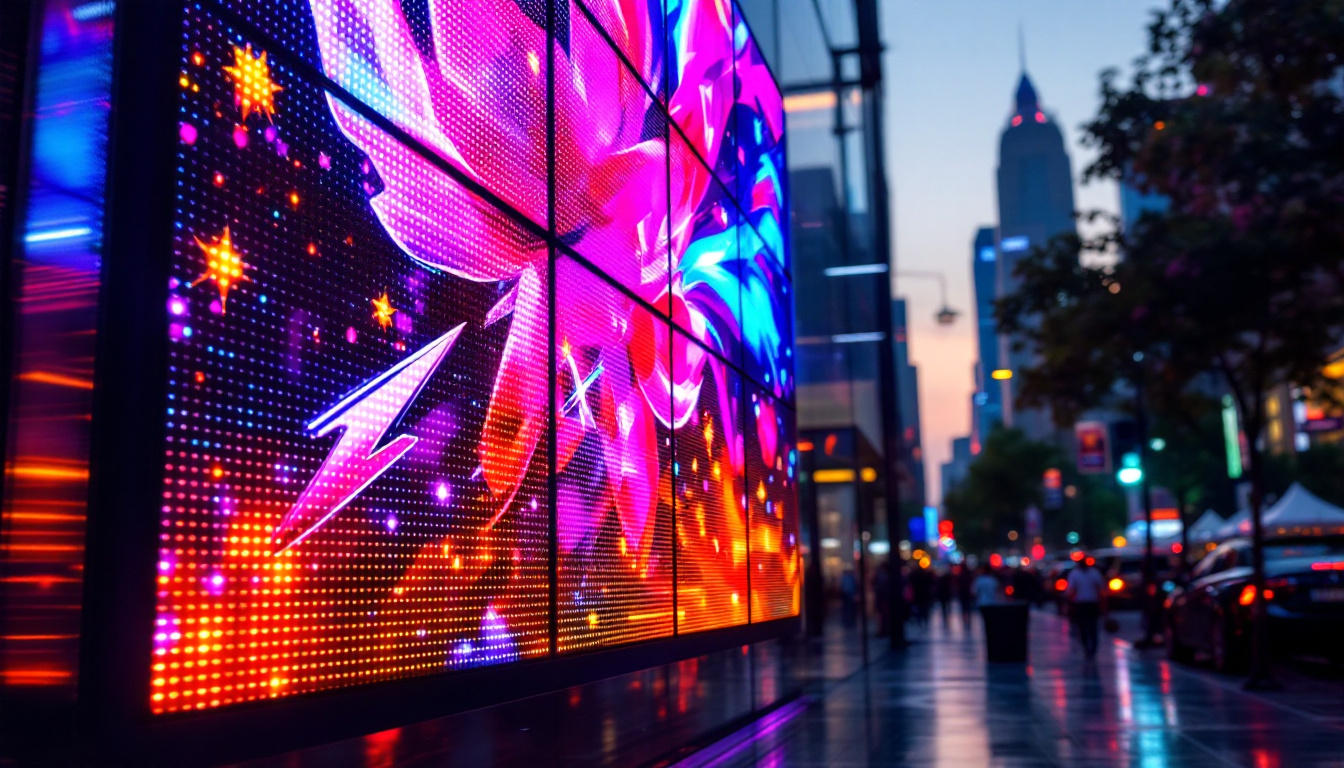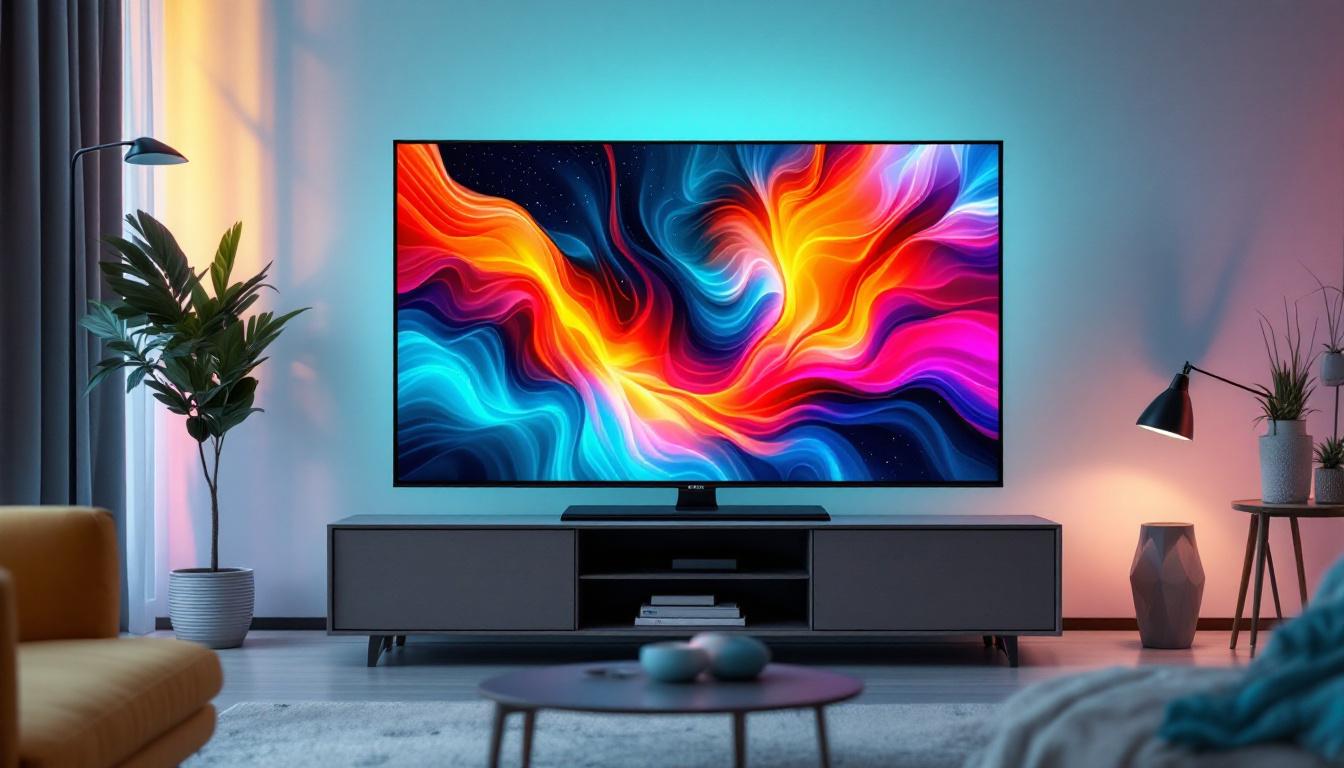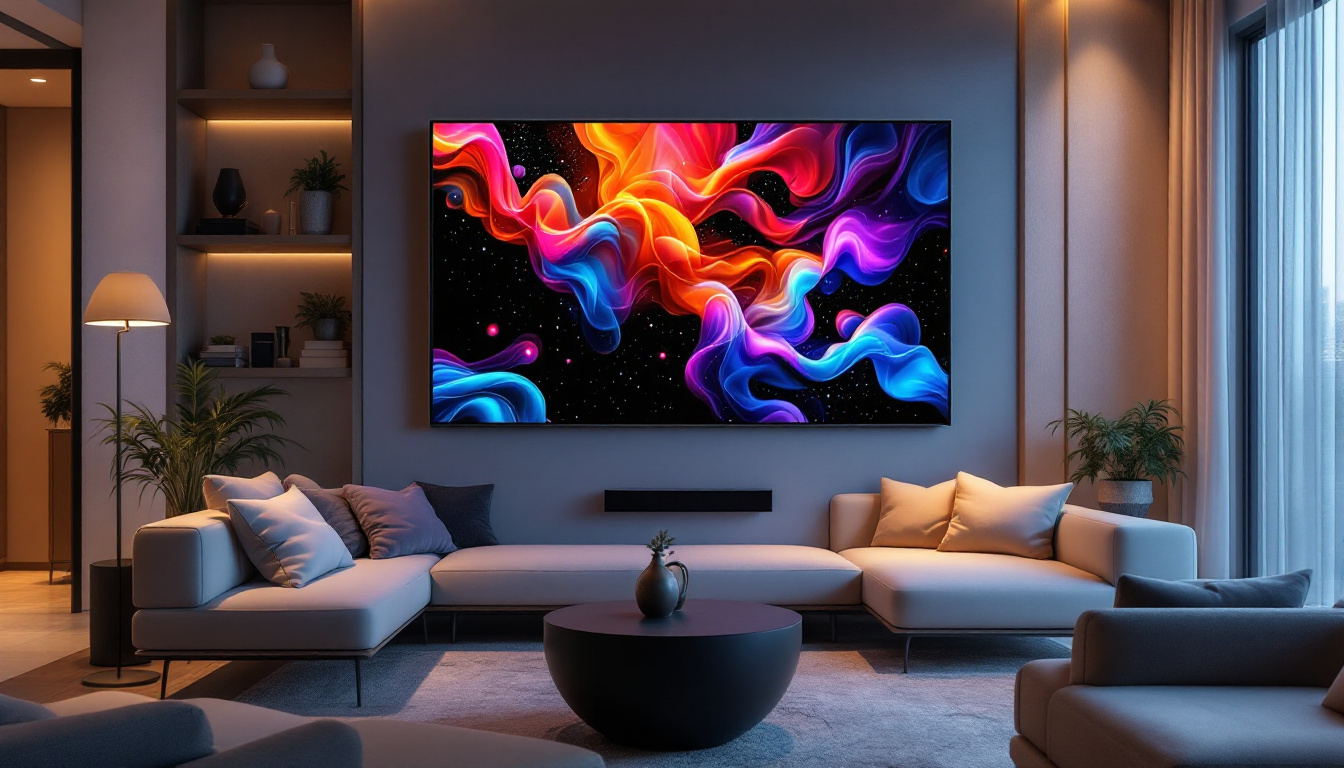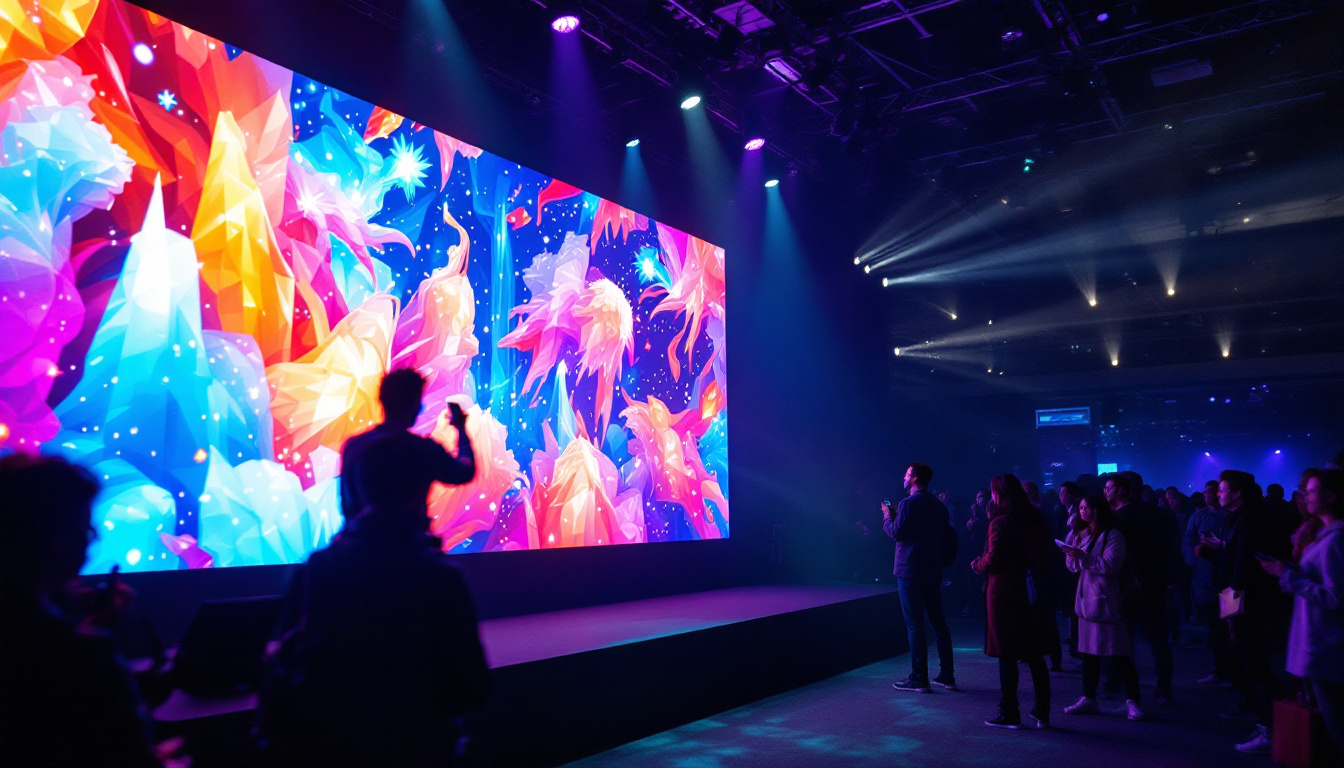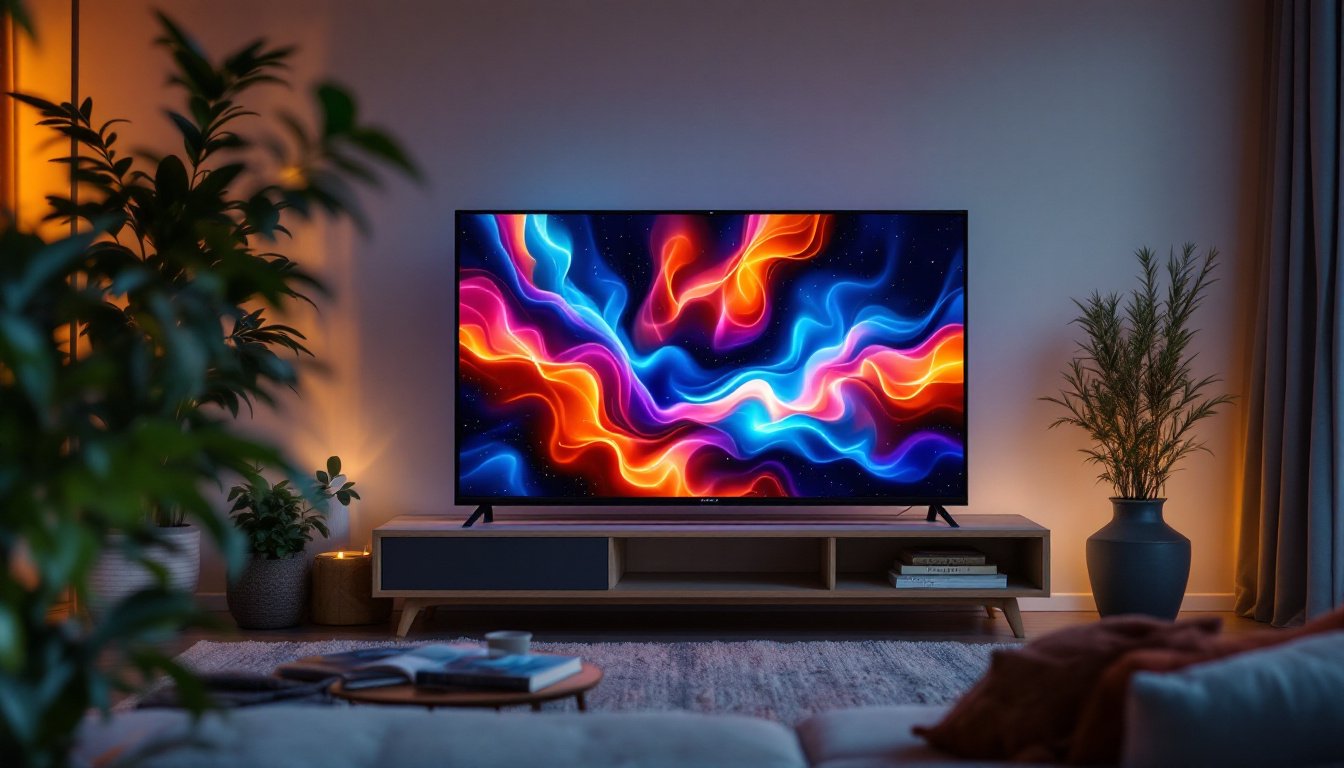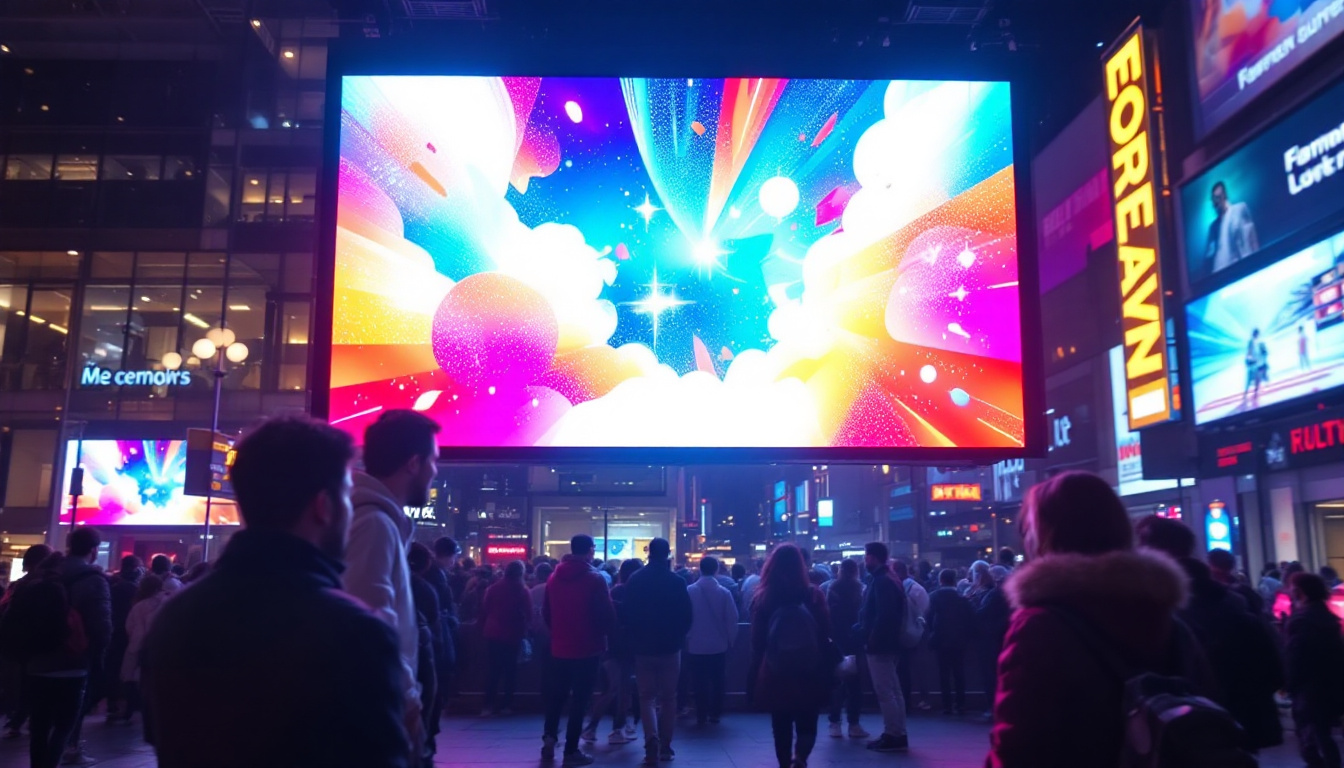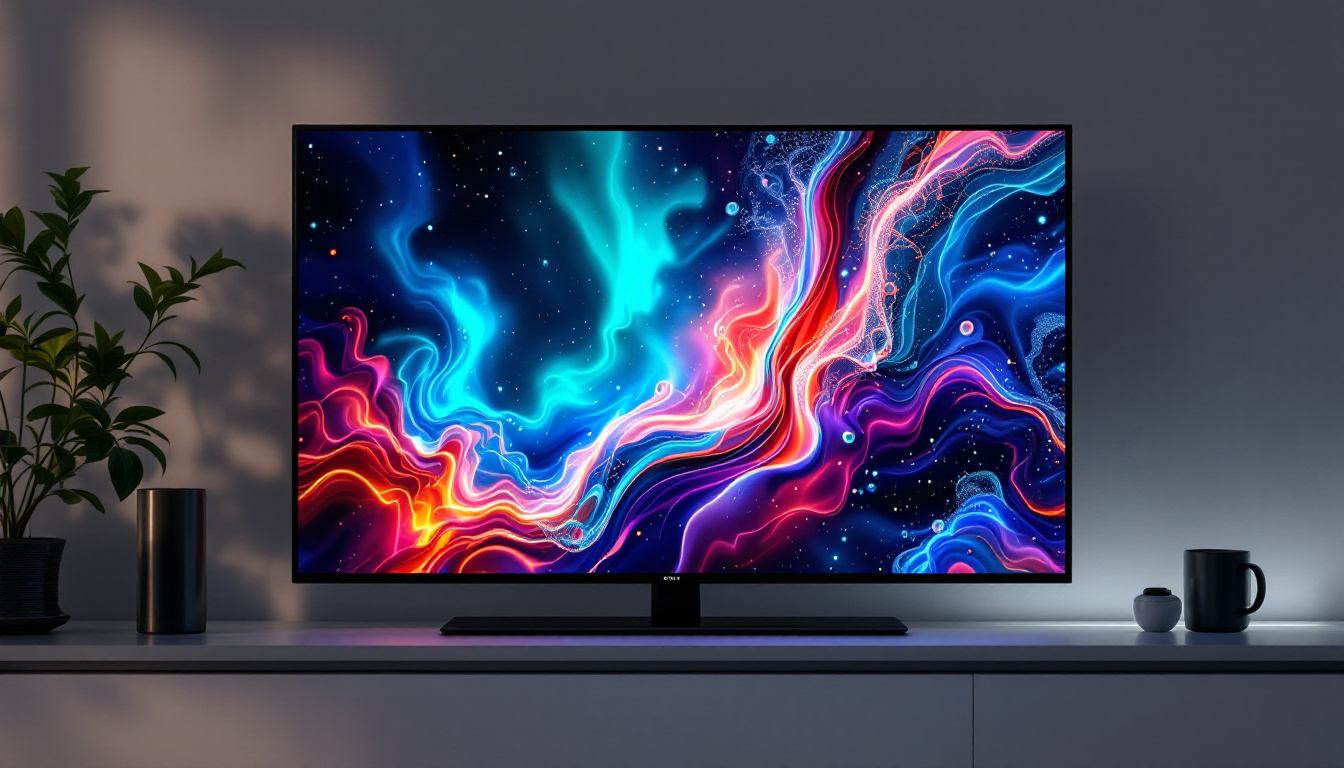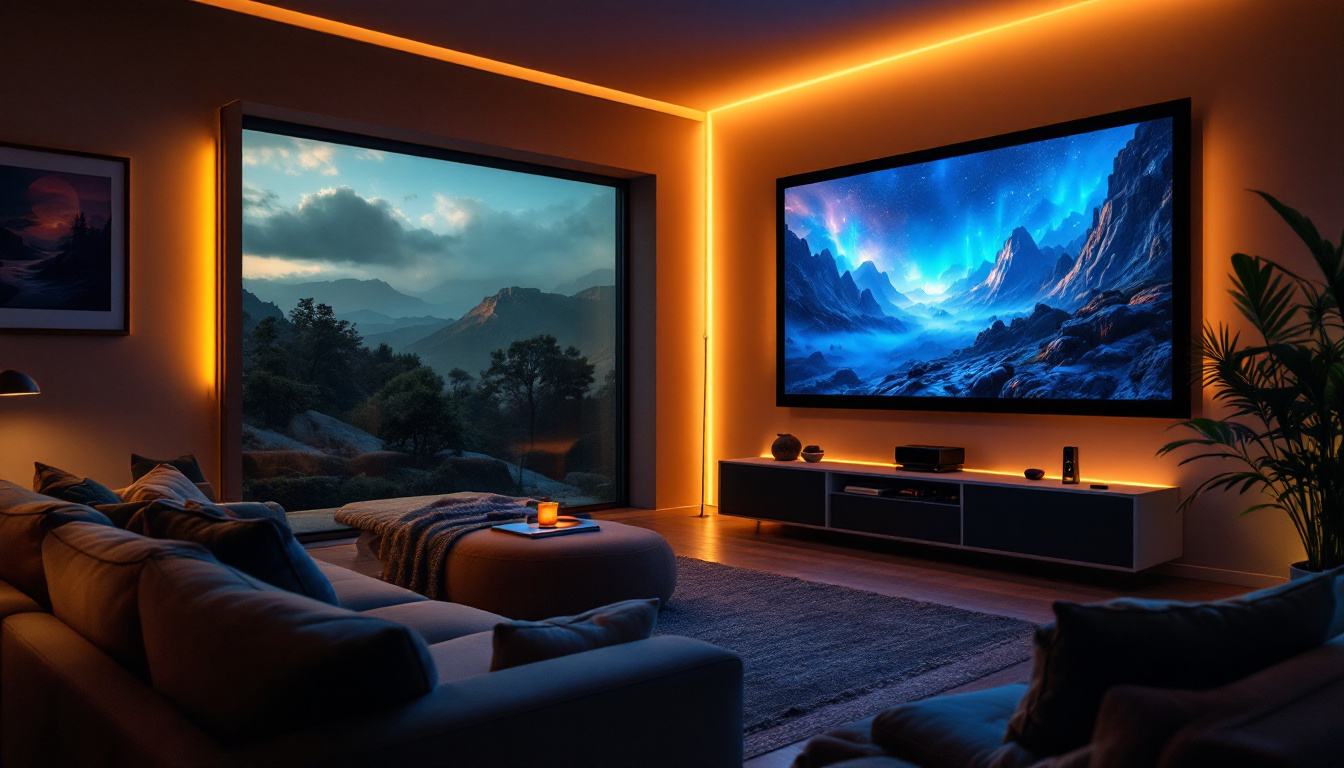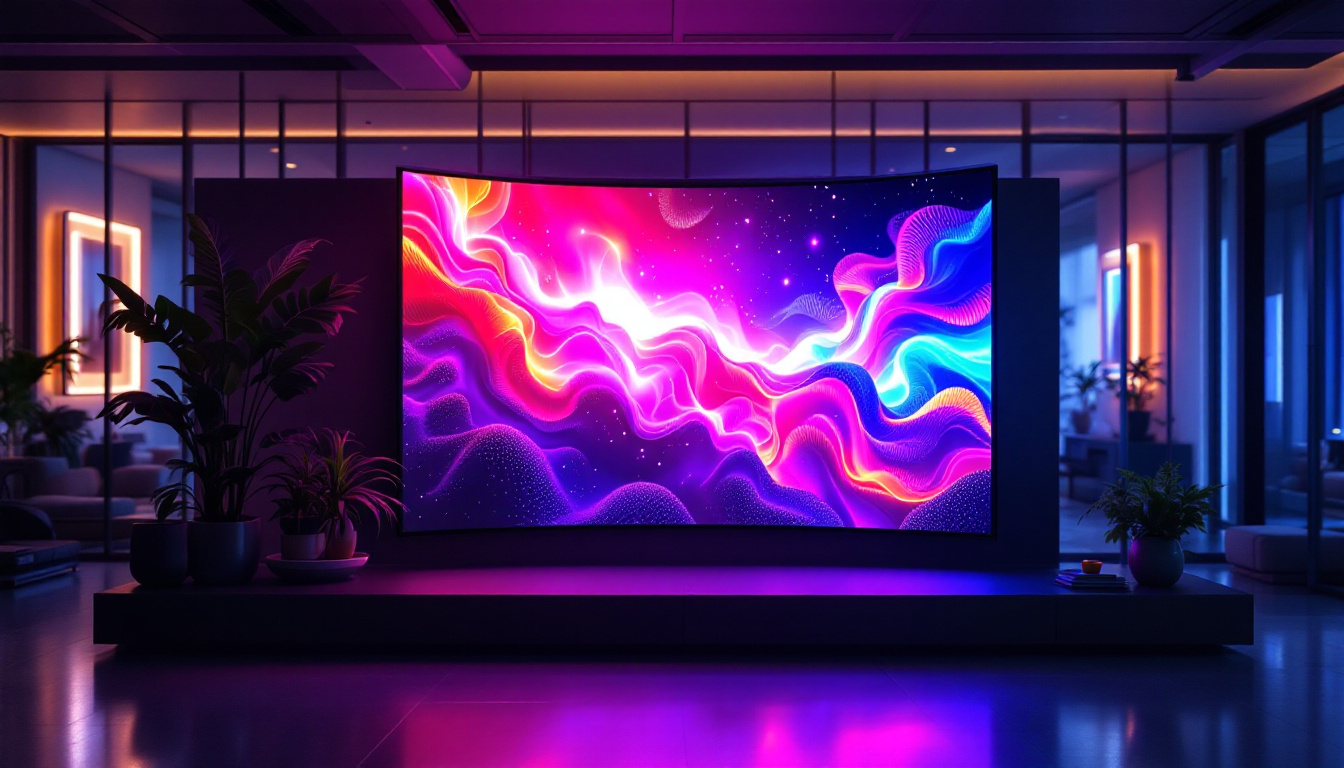Large LCD TV: LED Display Explained
In the world of home entertainment, large LCD TVs have become a staple in many households. With their sleek designs and impressive picture quality, these televisions offer a viewing experience that can rival that of a cinema. One of the key technologies behind the stunning visuals of large LCD TVs is LED display technology. This article delves into what LED displays are, how they work, and why they are a popular choice for large LCD TVs.
Understanding LCD Technology
Before diving into LED displays, it’s essential to grasp the basics of LCD (Liquid Crystal Display) technology. LCD TVs utilize liquid crystals to produce images on the screen. These crystals are sandwiched between two layers of glass, and when an electric current passes through them, they align to allow varying amounts of light to pass through, creating images. The technology has evolved significantly since its inception, leading to improved color accuracy and response times, which are crucial for delivering high-quality visuals in today’s media-rich environment.
The Role of Backlighting
One of the critical components of an LCD TV is its backlighting. Unlike OLED (Organic Light Emitting Diode) displays, which emit their own light, LCDs rely on an external light source. This is where LED (Light Emitting Diode) technology comes into play. LED backlighting enhances the brightness and contrast of the images displayed on the screen, leading to a more vibrant viewing experience. The advancements in LED technology have allowed for better color reproduction and deeper blacks, which are essential for enjoying movies and games.
There are two primary types of LED backlighting used in large LCD TVs: edge-lit and full-array. Edge-lit LED TVs have LEDs placed along the edges of the screen, while full-array LED TVs feature a grid of LEDs behind the entire display. Each type has its advantages and disadvantages, which can influence the overall picture quality. For instance, full-array backlighting often provides superior local dimming capabilities, allowing for enhanced contrast in scenes with both bright and dark elements, making it a preferred choice for cinephiles and gamers alike.
Advantages of LCD Technology
LCD technology, particularly when combined with LED backlighting, offers several advantages. One of the most significant benefits is energy efficiency. LED backlit LCD TVs consume less power compared to traditional CCFL (Cold Cathode Fluorescent Lamp) backlit LCDs, making them more environmentally friendly and cost-effective in the long run. This energy efficiency not only reduces electricity bills but also contributes to a lower carbon footprint, aligning with the growing consumer demand for sustainable technology.
Additionally, large LCD TVs with LED displays tend to be thinner and lighter than their predecessors, allowing for more flexible installation options. This sleek design is appealing to consumers looking to save space in their living areas. Furthermore, the durability of LCD panels means they are less prone to burn-in issues compared to OLED screens, making them a practical choice for varied viewing habits, whether it’s binge-watching a series or displaying static images like logos or news tickers. The versatility of LCD technology ensures it remains a popular option in homes and businesses alike, catering to a wide range of viewing preferences and environments.
What is LED Display Technology?
LED display technology refers to the use of light-emitting diodes as a source of illumination for LCD screens. This technology has transformed the way images are produced and viewed on large screens. LED displays can produce brighter images with better contrast ratios, enhancing the overall viewing experience. The evolution of this technology has made it a staple in various applications, from televisions and computer monitors to large-scale advertising billboards and digital signage.
How LED Displays Work
At the core of LED displays are tiny diodes that emit light when an electric current passes through them. In an LED-backlit LCD TV, these diodes serve as the light source for the liquid crystals. The combination of the liquid crystals and the LED backlighting creates the images seen on the screen. This innovative setup allows for precise control over brightness levels, which is crucial for achieving high-quality visuals in different lighting conditions.
When it comes to color reproduction, LED displays excel. They can produce a broader range of colors compared to traditional LCDs, thanks to their ability to adjust the intensity of the light emitted. This results in more accurate and vibrant colors, making the viewing experience more immersive. Furthermore, advancements in LED technology, such as the introduction of HDR (High Dynamic Range), have further enhanced the ability of displays to showcase a wider spectrum of colors and improved detail in both dark and bright scenes, making movies and games more lifelike.
Types of LED Displays
There are several types of LED displays, each offering unique features and benefits. The most common types include:
- Edge-Lit LED: This type uses LEDs positioned along the edges of the screen. It is generally thinner and lighter, making it a popular choice for modern designs. Edge-lit displays are often more energy-efficient, but they may not provide the same level of contrast as other types.
- Full-Array LED: Full-array displays have LEDs distributed across the entire back of the screen, allowing for better control of brightness and contrast. This type often features local dimming, which enhances black levels and overall picture quality. As a result, full-array LED displays are favored for home theaters and professional settings where image quality is paramount.
- Quantum Dot LED (QLED): QLED technology utilizes quantum dots to enhance color accuracy and brightness. This advanced technology is often found in high-end models, providing an exceptional viewing experience. QLED displays are particularly well-suited for bright environments, as they can produce stunning visuals even in well-lit rooms.
In addition to these types, there are also emerging technologies such as MicroLED, which promises even greater efficiency and flexibility in display design. MicroLED displays consist of microscopic LEDs that can be arranged in various configurations, allowing for seamless integration into different surfaces and environments. This innovation could potentially revolutionize the display industry, offering ultra-high resolution and contrast ratios that were previously unattainable.
The Benefits of LED Displays in Large LCD TVs
Large LCD TVs equipped with LED displays offer numerous benefits that make them a preferred choice for consumers. Understanding these advantages can help in making an informed purchasing decision.
Enhanced Picture Quality
One of the most significant benefits of LED displays is the enhanced picture quality they provide. The combination of liquid crystals and LED backlighting allows for brighter images with deeper blacks and more vibrant colors. This improvement is particularly noticeable in dark scenes, where full-array LED technology can significantly enhance contrast.
Moreover, LED displays are capable of producing higher peak brightness levels, making them suitable for viewing in well-lit rooms. Whether watching a movie during the day or enjoying a late-night show, LED-backlit LCD TVs can deliver an outstanding visual experience.
Improved Energy Efficiency
Energy efficiency is another crucial advantage of LED displays. Compared to traditional LCDs, LED-backlit models consume less power, making them more environmentally friendly. This efficiency not only reduces electricity bills but also contributes to a smaller carbon footprint.
Many manufacturers now emphasize energy efficiency in their designs, leading to a growing number of ENERGY STAR certified models. These TVs are designed to minimize energy consumption without sacrificing performance, making them an excellent choice for eco-conscious consumers.
Longevity and Durability
LED displays are known for their longevity and durability. The diodes used in LED backlighting have a longer lifespan compared to traditional backlighting methods. This means that consumers can enjoy their large LCD TVs for years without worrying about screen degradation or color fading.
Additionally, the robust nature of LED technology makes these displays less prone to damage from heat and humidity, further enhancing their durability. This reliability is a significant factor for consumers looking for a long-term investment in home entertainment.
Choosing the Right Large LCD TV with LED Display
When selecting a large LCD TV with LED display technology, several factors should be considered to ensure the best choice for individual needs and preferences. Understanding these aspects can help consumers navigate the vast array of options available on the market.
Screen Size and Resolution
Screen size is one of the most critical factors when choosing a large LCD TV. Depending on the size of the room and viewing distance, consumers should opt for a screen size that provides an immersive experience without overwhelming the space. Common sizes range from 55 inches to 85 inches, catering to various preferences.
Resolution is another essential consideration. Modern large LCD TVs typically offer Full HD (1080p), 4K (2160p), and even 8K resolutions. Higher resolutions provide more detail and clarity, making them ideal for large screens. For those who frequently watch high-definition content or play video games, investing in a 4K or 8K model can significantly enhance the viewing experience.
Smart Features and Connectivity
In today’s digital age, smart features have become a standard in large LCD TVs. Many models come equipped with built-in streaming services, voice control, and compatibility with smart home devices. These features allow users to access a wide range of content and control their TVs seamlessly.
Connectivity options are also vital. Look for models with multiple HDMI ports, USB ports, and support for wireless connections such as Wi-Fi and Bluetooth. This ensures compatibility with various devices, including gaming consoles, sound systems, and external storage devices.
Brand Reputation and Reviews
When investing in a large LCD TV, it’s essential to consider the brand’s reputation and customer reviews. Established brands often have a history of producing reliable and high-quality products. Reading reviews from other consumers can provide valuable insights into performance, durability, and customer service experiences.
Additionally, checking for warranties and after-sales support can offer peace of mind. A good warranty can protect against manufacturing defects and ensure that any issues can be resolved promptly.
Conclusion
Large LCD TVs with LED display technology have revolutionized the way people experience home entertainment. With their enhanced picture quality, energy efficiency, and durability, they offer a compelling option for consumers looking to elevate their viewing experience.
By understanding the fundamentals of LCD and LED technology, as well as considering factors such as screen size, resolution, and smart features, consumers can make informed decisions when selecting their next television. As technology continues to evolve, large LCD TVs with LED displays will undoubtedly remain at the forefront of home entertainment, providing stunning visuals and immersive experiences for years to come.
Discover the Future of Home Entertainment with LumenMatrix
Ready to take your home viewing experience to the next level? LumenMatrix is at the forefront of LED display innovation, offering a wide array of solutions that cater to your every need. From the comfort of your living room to the excitement of outdoor events, our Indoor and Outdoor LED Wall Displays, Vehicle LED Displays, and more provide unparalleled visual quality. Immerse yourself in the action with our LED Sports Displays or make a statement with our Custom LED and All-in-One LED Displays. For a unique and engaging way to showcase your content, explore our LED Transparent Displays. Elevate your space and captivate your audience with LumenMatrix’s cutting-edge technology. Check out LumenMatrix LED Display Solutions today and transform the way you watch, play, and interact.

